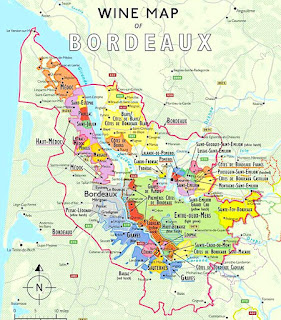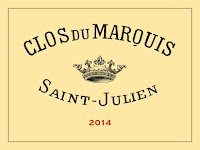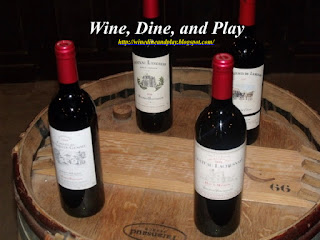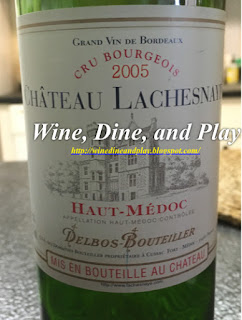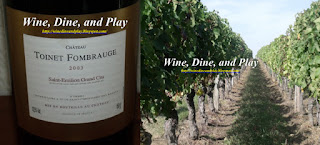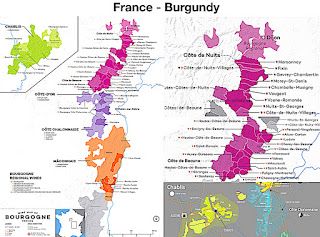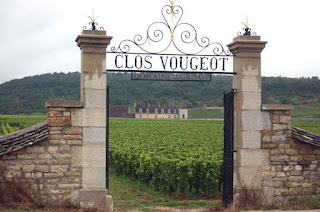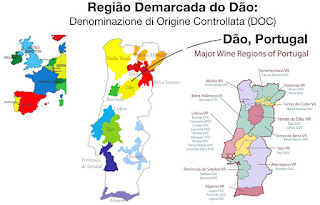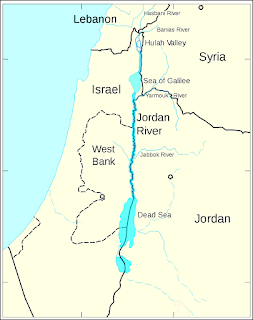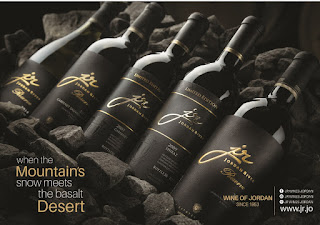 |
| Wine / Welcome to Napa Valley |
Article updated: September 2019
This page covers articles and interesting stories about the 'old world' and the 'new world' of wines, and articles published on this blog. 20% of the 500+ reviews on Wine Dine And Play are wine tastings, winery or vineyard visits, Château tours, and travelling adventures seeking out good wine and food from across the world. I hope you enjoy the listing and can relate to some of these stories. As I mention in every wine article written on Wine Dine and Play, I refer to myself as an oenophile though, oenophilia is defined as “a disciplined devotion to wine, accompanying strict traditions of consumption and appreciation.” In a general sense, oenophilia also refers to the enjoyment of wine, often by a layman — which I am, and not qualified as a professional like Robert Parker or a certified Sommelier. I just enjoy drinking it, so my rating is based on enjoyment and the overall experience, not the science of an expert, though I do sometimes include their expert opinions and source their work. Thus my reviews are subjective, not objective. I look forward to hearing some of your comments.
The 'Old World' and the 'New World'
 |
| Wine / Old and New World Map |
The Old World
|
Albania, Armenia, Austria, Azerbaijan, Bulgaria, Croatia, Czech Republic, Cyprus, England, France, Georgia, Germany, Greece, Hungary, Israel, Italy, Jordan, Lebanon, Macedonia, Moldova, Morocco, Poland, Portugal, Romania, Serbia, Sicily, Slovakia, Slovenia, Spain, Switzerland, and Turkey.
|
Old World wine refers primarily to wine made in Europe but can also include other regions of the Mediterranean basin with long histories of winemaking such as North Africa and the Near East.
|
France - Bordeaux:
The first vines were introduced to the Bordeaux region by the Romans in the mid-first century, to provide wine for local consumption. Today Bordeaux has roughly 287,000 acres dedicated to wine growing with 57 appellations, 10,000 wine-producing estates châteaux and 13,000 grape growers as well as the five premier cru (first growth), which produce some of the most expensive wines in the world. The average annual production is 960 million bottles.
First Growths (Premiers Crus) Commune
Left and Right Bank Tours:
|
Bordeaux:
| |
Founded around 300 BCE as a port city by the Bituriges Vivisci a Celtic or ‘Gaul’ tribe of Aquitanian origin. The original name given to the city was called Burdigala. Victor Hugo, an author who is best known for writing Les Misérables found the town so beautiful he once said: "Take Versailles, add Antwerp, and you have Bordeaux”. The city was called the ‘pearl of Aquitaine’ and outside of Paris has the highest number of historical buildings in all of France. They include architectural monuments like the Roman amphitheatre (third century CE); the Romanesque-Gothic Church of St. Seurin (11th—13th century), and the Church of Ste. Croix (12th-13th century).
| ||
Bordeaux - A Sip and Taste
A tour of the Châteaux in both Bordeaux and Saint-Émillion, the city, and the wonderful restaurants I ate at as well as a brief history of Bordeaux. Join me for a sip and a taste.
Review of: Bordeaux - A Sip and Taste
Bordeaux, France
Wine Style: Bordeaux / Heritage
Average Price: € - €€€€€
Overall Rating: 100 points
| ||
Bordeaux:
|
Left Bank / Saint-Julien AOC:
| |
Founded in 1936 Saint-Julien is an Appellation d'Origine Contrôlée for red wine in Bordeaux, located in the Médoc subregion. It takes its name from the commune Saint-Julien-Beychevelle and is one of the six communal appellations in Médoc. The grape varieties grown under this appellation are the same as those found throughout the Médoc area, i.e. predominantly Cabernet Sauvignon, along with Cabernet Franc, Merlot, Malbec, Petit Verdot and Carménère. | ||
Domaines Delon
Is a Bordeaux Domaine with three Châteaux on both banks of the Garonne River. On the Right Bank, they have a Pomerol and two on the Left Bank which includes the Saint-Julien AOC.
Review of: Clos du Marquis
Saint-Julien-Beychevelle, France
Wine Style: Bordeaux / Heritage
Average Price: €€€€€
Overall Rating: 89 points
| ||
Left Bank / Haut-Médoc AOC:
|
Bordeaux:
| |
In 1936 the Institut National des Appellations d'Origine made Haut-Médoc is an Appellation d'Origine Contrôlée for wine in the Bordeaux wine region, on the Left Bank of the Gironde estuary. Covering a large part of the viticultural strip of land along the Médoc peninsula. Its southern edge borders the city of Bordeaux and the Médoc AOC to the north, encompassing fifteen communes exclusive to the appellation, while at the same time it enclaves six appellations made up of nine communes: (Margaux AOC, Listrac-Médoc AOC, Moulis-en-Médoc AOC, Saint-Julien AOC, Pauillac AOC and Saint-Estèphe AOC). | ||
Château Lanessan
A Cru Bourgeois Supérieur from the Cussac-Fort-Médoc, in Bordeaux, France, a commune in the Gironde department in Nouvelle-Aquitaine listed in 2008 as a UNESCO World Heritage Site. Château Lanessan produces an average of 220,000 bottles of the Grand Vin is produced per year.
Review of: Château Lanessan
Cussac-Fort-Médoc, Bordeaux, France
Wine Style: Bordeaux / Heritage
Average Price: €€€
Overall Rating: 92 points
|
Bordeaux:
|
Left Bank / Haut-Médoc AOC:
| |||
| The Haut MedocBordeaux wine appellation is massive. In fact, the Haut Medoc appellation is the largest area under vine in the greater Medoc with a total of 4,198 hectares planted with vines. In an average year, 2,333,000 cases of wine are produced. Cabernet Sauvignon is the main grape in the region. Only red wines are allowed by AOC law to be produced in the Haut Medoc. The few white Bordeaux wines made in the region are sold as Bordeaux Blanc wine. | |||
Château Lachesnaye Lanessan’s Baby Brother with the Lachesnaye Castle, built in the English style in the nineteenth century. Château Lachesnaye produces a medium-bodied, smooth and dry Cabernet Sauvignon / Merlot blend. Cussac-Fort-Médoc, Bordeaux, France Wine Style: Bordeaux / Heritage Average Price: €€ Overall Rating: 84 points |
| |||
Left Bank / Margaux AOC:
|
Bordeaux
| |||
Margaux is a wine-growing commune and Appellation d'origine contrôlée within Haut-Médoc in Bordeaux, centred on the village of Margaux. It’s leading château is also called Margaux. The Margaux appellation contains 21 cru classé châteaux properties from the 1855 Bordeaux Classification, more than any other Left Bank appellation. It is also, geographically speaking, the largest in the Médoc, and is divided into five communes or parishes. The grapes permitted for use here are Cabernet-Sauvignon, Cabernet Franc, Merlot, Carmenere, Petit Verdot and Malbec. |
| |||
| Château Prieuré-Lichine A Quatrieme Cru, part of the Margaux AOC that was given its original classification in 1745. Run by Alexis Lichine since 1951, he has been nicknamed the “Pope of Wine”. Cantenac, France Wine Style: Bordeaux / Heritage Average Price: €€€ Overall Rating: 95 points | |||
Bordeaux:
|
Right Bank / Saint-Émilion AOC:
| |||
| Saint-Émilion is an appellation d'origine contrôlée for wine in the Bordeaux situated in the Libourne subregion on the right bank of the Dordogne. Saint-Émilion is registered as a World Heritage Site by UNESCO, 13,000 acres or 67.5% of the total area of wine-producing communes (Saint-Émilion, Saint-Christophe-des-Bardes, Saint-Hippolyte, Saint-Étienne-de-Lisse, Saint-Laurent-des-Combes, Saint-Pey-d’Armens, Saint-Sulpice-de-Faleyrens, Vignonet, and a part of the Libourne commune). The wines of Saint-Émillion are typically blended from different grape varieties, with the three main ones being Merlot (60% of the blend), Cabernet Franc (nearly 30%) and Cabernet Sauvignon (around 10%). | |||
| Château Toinet Fombrauge Château Fombrauge is the largest Grand Cru Classé of Saint-Émilion with a vineyard stretching on 60 hectares owned by winemaker Bernard Magrez. The grape varieties used on his Grand Cru’s are typically 89% Merlot, 8% Cabernet Franc, 2% Malbec, and 1% Cabernet Sauvignon. The Right bank of the Garonne River is known for its Merlot, while the left bank is known more for the higher amounts of cabernet. Review of: Château Toinet Fombrauge Saint-Christophe-des-Bardes, Saint-Émillion, France Wine Style: Bordeaux / Merlot Heritage Average Price: €€€ Overall Rating: 96 points |
|
France - Loire:
The Loire Valley wine region is known as the “garden of France” and includes the French wine regions situated along the Loire River. Spread out across the Loire Valley there are 87 appellations under the AOC, VDQS and Vin de Pays systems. When the Romans conquered Gaul in the 1st Century CE, they recognized the climate and soil were perfect for vines and that the river made a convenient “roadway” to move goods throughout the empire. By the Middle Ages, the Loire was at the heart of France. At the midpoint between the more Latin south and the Germanic north, this is where culture and language met. Monks of the Catholic Church tended the vineyards and the wines gained popularity, especially with the English and the Dutch.
The Loire Valley is home to over 4000 wineries that produce an array of elegant, quality wines. There are racy whites, refreshing rosés, reds that favour fruit over force, and sumptuous sweet and sparkling wines that even rival neighbouring Champagne. The Loire is so large it is divided into three regions:
- Lower Loire - Pays Nantais
- Middle Loire - Anjou, Saumur, and Touraine
- Upper Loire - Centre
Loire:
|
Sancerre AOP:
| |||
|
When the Appellation d’Origin Contrôlée was introduced in 1935 (the system for quality wines in France), the Loire Valley became recognized as a region of quality. Today it has 69 AOP’s (official designations), which make up 75% of the wine production. The Upper (or Central/Centre) the Loire is the smallest region, but it’s home to the most famous Loire appellations–Sancerre and Pouilly-Fumé. The Sauvignon Blanc from these two areas is emulated throughout the wine world. Sancerre AOP is on the eastern edge of the Loire Valley. Here, grapes are planted in all three soil types and, when blended together, create the benchmark for Sauvignon Blanc.
| |||
Domaine Hubart Brouchard
Hubert Brochard produces classically styled Sancerre blanc, rosé, and rouge from their family-owned winery in Chavignol since 1900. The Domaine is now run by the fifth and sixth generation of Brochards with 152 acres under vine in Sancerre, Pouilly-Fumé, and Vin de Pays du Val de Loire. They produce 500,000 Bottles each year.
Review of: Domaine Hubart Brouchard Wines
Chavignol, Sancerre, France
Wine Style: Sancerre Sauvignon Blanc
Average Price: €
Overall Rating: 94 points
|
|
France - Bourgogne / Burgundy:
The French Wine region of Burgundy (aka “Bourgogne”) goes back to the Romans in the 1st century CE, but it was the Catholic monks that really established the vineyards in the Middle Ages. Burgundy may be small in size but its influence is huge in the world of vino. The complexity of Burgundy can cast fear into the heart of even a seasoned wine pro, along with being home to some of the most expensive wines in the known universe, but there are tasty and affordable wines too. Located in the east-central part of France, Burgundy has 5 primary wine-growing areas (not including Beaujolais and Châtillonnais):
- Chablis – “shab-lee”
- Côte de Nuits – the night slope
- Côte de Beaune – the slope of Beaune
- Côte Chalonnaise – the Chalon slope
- Mâconnais – the region of Mâcon
Bourgogne / Burgundy:
|
All 5 primary growing areas toured:
| |||
The easiest way to wrap your brain around Burgundy is to understand that there are really only two grape varieties to remember: Pinot Noir and Chardonnay. There are others too, of course, like Aligoté, Pinot Gris, Gamay, and Sauvignon Blanc but the primary focus of Burgundy’s production is Pinot Noir for Bourgogne Rouge and Chardonnay for Bourgogne Blanc. There are over 100 “appellations,” or approved wine-growing areas, and these are divided into 4 levels of quality.
1% Grand Cru e.g. Grands-Echézeaux, Montrachet
10% Premier Cru e.g. Vosne Romanée 1er Cru
37% Village Wines e.g. Savigny-Les-Beaune
52% Regional Wines e.g. Crémant de Bourgogne
|
| |||
|
The Bourgogne Tasting
Burgundy wine (Bourgogne or Vin de Bourgogne) is wine made in a region of eastern France, west of the Saône River, which is a tributary of the Rhône River further south in the city of Lyon. The most famous wines produced here are commonly referred to as "Burgundies" or dry red wines made from Pinot noir grapes and white wines made from Chardonnay grapes. Other grape varieties include Gamay and Aligoté. Small amounts of rosé and sparkling wines are also produced in the region.
Review of: The Bourgogne Tasting
Dijon, Vougeot, Mâcon, Lyon, Chablis, Nuits-Saint-Georges, France
Wine Style: Pinot Noir / Chardonnay / Gamay
Average Price: € - €€€€
Overall Rating: 100 points
| |||
Côte de Nuits:
|
Bourgogne / Burgundy:
| |||
|
The Côte de Nuits is a French wine region located in the northern part of the Côte d'Or, the limestone ridge that is at the heart of the Burgundy wine region. It extends from Dijon to just south of Nuits-Saint-Georges, which gives its name to the district and is the regional centre.
| |||
Pierre LaForest
Tasting in a cave - The La Grande Cave Pierre Laforest wine cellar is between Beaune and Dijon, in the heart of Burgundy, at the foot at the celebrated vineyards of Clos de Vougeot. La Grande Cave is the only remaining part of the old Chateau of Vougeot
Review of: Pierre LaForest Les Montespierres
Rue du Vieux Chateau
Cote d'Or, Vougeot, France
Wine Style: Pinot Noir / Chardonnay
Average Price: €€€
Overall Rating: 90 points
|
| |||
Bourgogne / Burgundy:
|
Côte de Nuits:
| |||
The Côte de Nuits covers fourteen communes. Six produce grand cru wines, in the central district between Gevrey-Chambertin and Nuits-Saint-Georges, with four lesser villages either side. The Grand Crus of the Cote de Nuits are some of the smallest appellations in France, less than a hectare in the case of La Romanée.
|
| |||
|
Domaine Bertagna
Elegance and purity of fruits, terroir’s, and vintages.
Review of: Domaine Bertagna
Vougeot, Burgundy, France
Wine Style: Pinot Noir / Chardonnay
Average Price: €€€
Overall Rating: 96 points
|
Bourgogne / Burgundy:
|
Côte de Nuits:
| |||
Breaking away from the typical Roman style of planting near rivers, the Romans encouraged their allies in the area, the Aedui to plant vines on the narrow strip of land that was located to the east of their settlement at Augustodunum. It was this area, known as Pagus Arebrignus, that was to eventually be subdivided into the Côte de Nuits and Côte de Beaune. When the area was under attack from the Alamans and other Germanic tribes, the Romans sought the help of a Baltic tribe known as the Burgundians who would eventually settle into the area and give the region its name.
|
| |||
|
Domaine Guy & Yvan Dufouleur
A Grand Cru producer
Review of: Domaine Guy & Yvan Dufouleur
Nuits-Saint-Georges, France
Wine Style: Pinot Noir / Chardonnay
Average Price: €€
Overall Rating: 85 points
| |||
Côte de Nuits:
|
Bourgogne / Burgundy:
| |||
|
During the reign of King Louis XIV, his personal physician Guy-Crescent Fagon recommended that he drink only wines from Nuits St-Georges for their health-giving properties. Wine merchants in the Côte de Nuits latched onto this royal association as a great marketing coup over the region's rivals in Champagne and Bordeaux. The 18th century ushered in a period of tête de cuvée of wines made solely from the best grapes produced in single vineyards. To add to the distinctiveness of these wines, new winemaking techniques such as extended maceration and longer fermentations became popular.
| |||
Clos de Vougeot
A Grand Cru Classe
Clos de Vougeot, also known as Clos Vougeot, is a wall-enclosed vineyard, a clos, in the Burgundy wine region known for red wine from this vineyard. It was named for the River Vouge, which is in fact only a stream separating the village Vougeot from Chambolle-Musigny.
Review of: Clos de Vougeot
Vougeot, Burgundy, France
Wine Style: Pinot Noir
Average Price: €€€
Overall Rating: 92 points
|
| |||
Bourgogne / Burgundy:
|
Chablis AOC:
| |||
Chablis lies about 10 miles east of Auxerre in the Yonne department, situated halfway between the Côte d'Or and Paris. Of France's wine-growing areas, only Champagne and Alsace have a more northerly location. The region covers 27 communes located along the Serein river. Anséric de Montréal gave a vineyard at Chablis to the Abbey in 1186. In 1245 the chronicler Salimbene di Adam described a Chablis wine. Chardonnay is believed to have first been planted in Chablis by the Cistercians of Pontigny Abbey in the 12th century and from their spread south to the rest of the Burgundy region.
|
| |||
| Domaine William Fèvre
A classic Grand Cru
William Fevre is the largest and most famous Grand Cru; its fame based on its history as one of Chablis’ first vineyards.
Review of: Domaine William Fèvre
Chablis, Burgundy, France
Wine Style: Chardonnay
Average Price: €€€
Overall Rating: 95 points
|
Portugal:
Portuguese wine is the result of traditions introduced to the region by ancient civilizations, such as the Phoenicians, Carthaginians, Greeks, and mostly the Romans. In the southern Iberian Peninsula, some archaeological finds attest that the consumption of wine occurred around the 7th to the 6th century BCE. Portugal has a large array of native varietals, producing an abundant variety of different wines. The wide array of Portuguese grape varietals contributes as significantly as the soil and climate to wine differentiation, producing distinctive wines from the Northern regions to Madeira Islands, and from Algarve to the Azores. In Portugal, only some grape varietals or castas are authorized or endorsed in the Demarcated regions. The appellation system of the Douro region was created nearly two hundred years before that of France, in order to protect its superior wines from inferior ones. The quality and great variety of wines in Portugal are due to noble castas, microclimates, soils and proper technology.
Official designations:
- The Quality Wine Produced in a Specific Region (QWPSR) or the VQPRD (Vinho de Qualidade Produzido em Região Demarcada) which are the most protected wine and indicates a specific vineyard, such as Port Wine, Vinhos Verdes, and Alentejo Wines.
- D.O.C. (Denominação de Origem Controlada) which secures a superior quality.
- Wines that have more regulations placed upon them but are not in a DOC region fall under the category of Indicação de Proveniência Regulamentada (IPR, Indication of Regulated Provenance).
- Regional Wine - Vinho Regional Carries with it a specific region within Portugal
- Table Wines - Vinho de Mesa carries with it only the producer and the designation that it's from Portugal.
Portugal:
|
Dão DOC:
| |||
|
Dão is a Portuguese wine region situated in the Região Demarcada do Dão with the Dão-Lafões sub-region of the Centro, Portugal. It is one of the oldest established wine regions in Portugal. Dão wine is produced in a mountainous region with a temperate climate, in the area of the Rio Mondego and Dão rivers in the Northcentral region of Portugal.
| |||
Boas Quintas
The Giesta Dão by the Boas Quintas Winery is one of many varietals that they produce using grapes such as Touriga Nacional, Tinta Roriz, and Jaen. Boas Quintas started in 1991 in the Dão region, but only in 2010 did it expand to a multi-regional project that utilized the best of the Quinta da Giesta, Quinta do Garro, Quinta da Fonte do Ouro and Herdade da Gâmbia estates.
Review of: Boas Quintas Wine
Mortágua, Portugal
Wine Style: Giesta Red
Average Price: €€
Overall Rating: 87 points
|
|
Jordan:
Jordan's location in the cradle of civilization makes it an obvious candidate for a long history of viticulture and winemaking. After all, neighbouring Israel and Syria both have winemaking in their history, reaching back thousands of years. Israeli wine is also enjoying increasing success in the early 21st Century. But there is little evidence that the lands which make up modern-day Jordan have ever been used for viniculture. Whatever grape varieties were once grown in Jordan are believed to have been lost forever. Jordan's wines are now made from the Vitis vinifera varieties which have become household names in recent decades: Cabernet Sauvignon, Merlot, Shiraz and Pinot Noir for reds; Chardonnay, Muscat, Pinot Gris, Gewurztraminer and Chenin Blanc for whites.
Jordan:
|
Jordan River AOC:
| |||
|
Jordanian wine is produced by two wineries, with an annual production of nearly a million bottles a year. Jordan has a long tradition of winemaking, dating as far back as Nabatean times. Archaeological digs near Petra have uncovered at least 82 wine presses of industrial-scale dating back to Nabatean times. Several sources suggest that the wine served to Jesus during the Last Supper came from Umm Qais in northern Jordan.
| |||
Jordan River Wines
Part of the Haddad Estate from the Jordan River Valley The legacy was revived in 1953 when Mudieb M. Haddad founded Eagle Distilleries Company. In 1975 Italian experts collaborated with the Haddad Family to build the first “state of the art” winery in Jordan. In the year 2000, the winery was transformed into modern wine-making with over 40 grape varieties planted.
Review of: Jordan River Wines
Madaba, Jordan
Wine Style: Shiraz
Average Price:$ (JOD)
Overall Rating: 89 points
|
|
This page is still being worked on, continue to return to see the new additions

